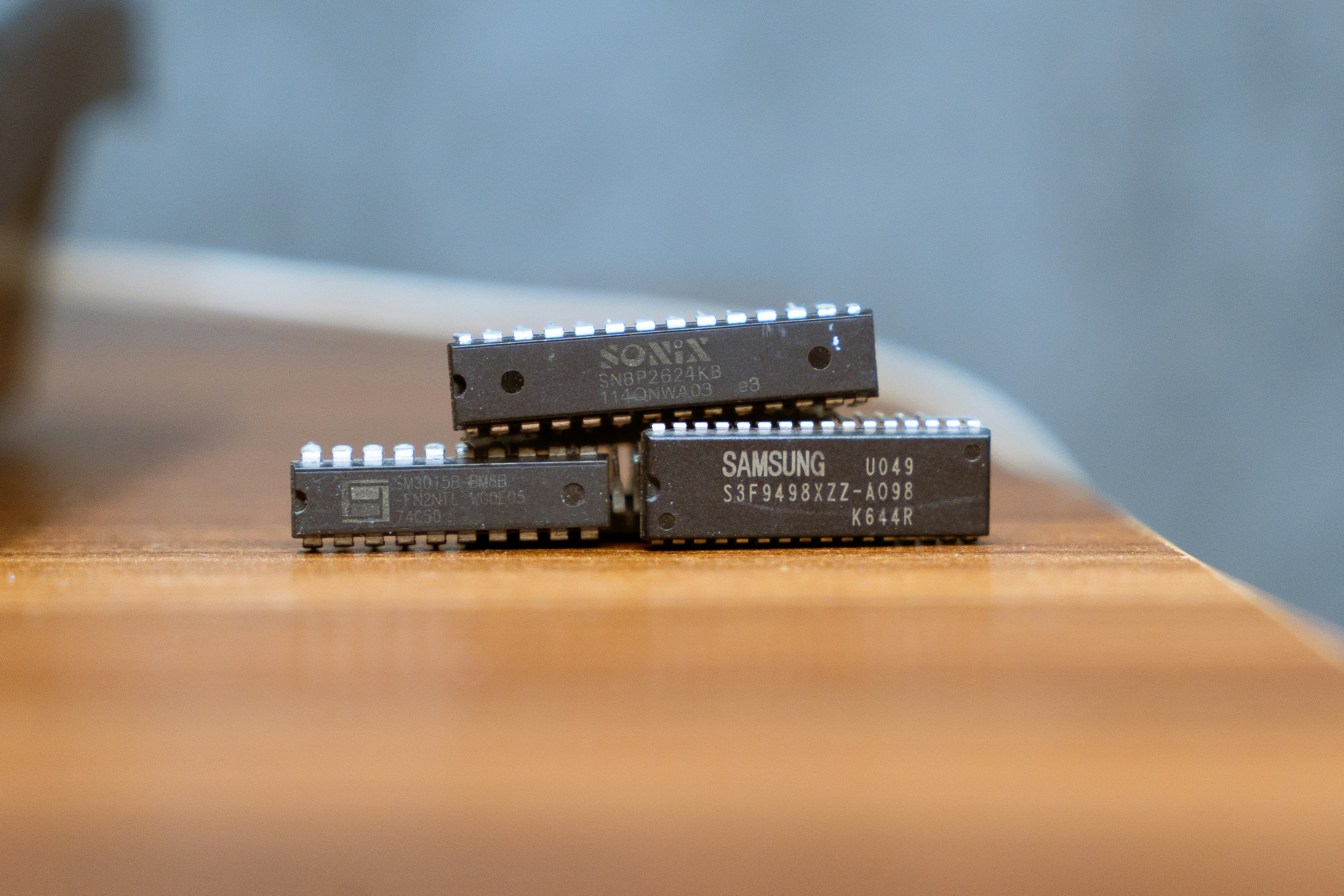
Tips for Staying Inspired: How Semiconductor Pros Fuel Creativity and Innovation
Semiconductors power nearly every aspect of modern technology, from smartphones and electric vehicles to data centres and medical devices. As the industry transitions to smaller nodes, advanced packaging, and heterogeneous integration, staying creative and ahead of the curve becomes both more essential and more challenging. Whether you’re a semiconductor process engineer, a chip architect, a packaging specialist, or a product manager, you face complex technical hurdles, long development cycles, and fierce market competition.
So how do semiconductor professionals sustain innovation and creativity under these pressures? Below, we explore ten practical strategies to keep you inspired and continuously driving breakthroughs in chip design, manufacturing, and integration. Whether you’re working on cutting-edge lithography, next-gen transistors, or novel semiconductor materials, these pointers can help you discover new angles, refine processes, and remain passionate about shaping the future of electronics.
1. Revisit the Bigger Picture of Semiconductors
Between tight deadlines, yield concerns, and a relentless push for denser nodes, it’s easy to lose sight of why semiconductors matter so profoundly. By reconnecting with the field’s overarching impact, you reinvigorate your commitment and foster new ideas.
Think About End-User ImpactSemiconductors aren’t just chips; they’re the beating heart of modern computing, enabling AI breakthroughs, life-saving medical devices, and carbon-reducing electric vehicles. Acknowledging this vast impact puts tasks like mask design or process tuning into a broader, more inspiring context.
Reflect on Game-Changing MomentsFrom the invention of the integrated circuit to Moore’s Law and beyond, the semiconductor industry has a storied history of leaps in miniaturisation and performance. Studying these milestones reminds you that incremental progress in transistor design or packaging can catalyse massive changes in the tech world.
Envision Future ApplicationsQuantum computing, advanced neuromorphic chips, and emerging 3D stacking techniques could drastically alter how we interact with technology. Imagining the real-world outcomes—faster drug discovery, brain-like AI, ubiquitous sensors—keeps your day-to-day tasks infused with a sense of possibility.
Why This HelpsFocusing on the grand impact of semiconductor innovations reframes daily routines—like measuring defect densities or verifying logic gates—as foundational steps toward breakthroughs that will ripple across industries and society.
2. Embrace Cross-Functional Collaboration
Semiconductor creation involves a highly collaborative environment, spanning materials science, lithography, circuit design, packaging, test engineering, and more. Leveraging this multidisciplinary ecosystem can spark fresh solutions to entrenched challenges.
Partner with Material and Equipment ExpertsIf you specialise in transistor architecture, working closely with those handling deposition techniques or advanced lithography equipment can unearth novel ways to enhance yields, reduce patterning defects, or explore emerging materials (e.g., graphene, silicon carbide).
Coordinate with Packaging and Test TeamsAs heterogeneous integration and advanced packaging become critical, bridging front-end and back-end processes is vital. Regular discussions might reveal how slight design adjustments improve reliability or simplify final assembly and testing flows.
Engage Circuit and System DesignersInteracting with chip architects clarifies which device characteristics—like threshold voltages, power consumption, or I/O speeds—matter most in real-world applications. Such exchanges often lead to process tweaks that significantly boost overall performance.
Extend OutwardDon’t just rely on in-house collaboration. Conferences, working groups, and cross-company alliances can surface new thinking on standardisation, advanced node challenges, or EDA (electronic design automation) improvements.
Why This HelpsCollaboration breaks down silos, allowing process engineers, device physicists, circuit designers, and business strategists to align. This fusion of perspectives fosters creative insights that can yield leaps in manufacturing efficiency, chip performance, and cost-effectiveness.
3. Launch Side Projects for Exploratory Innovation
Mainstream semiconductor development tends to be project-driven with strict deadlines and risk-averse mindsets. Side projects give you space to experiment outside your immediate responsibilities—whether investigating unconventional materials, prototyping novel transistor structures, or exploring alternative process flows.
Set Up a Small “Skunkworks” EnvironmentIf possible, earmark a small portion of lab resources (or simulation time) to pursue experimental ideas. Freed from heavy documentation and official sign-offs, you can explore new doping schemes or nontraditional wafer processes more freely.
Explore Emerging FieldsCurious about 2D materials or flexible electronics? Investigating them as a personal venture or group side project can unearth breakthroughs that might later integrate into your main product roadmap.
Document Incremental FindingsKeep a lab notebook or digital log of every test, outcome, or relevant measurement. Even a so-called “failure”—like a doping profile that yields poor yields—could reveal helpful data about doping diffusion or device stability.
Encourage Multi-Disciplinary InputInvite a co-worker from packaging or test engineering to brainstorm on your side project. Their external viewpoint might solve a puzzle you’ve been wrestling with or suggest a simpler test method for your concept.
Why This HelpsSide projects offer creative freedom without the constraints of formal metrics or deadlines. This unstructured exploration can uncover advanced techniques or materials that, with refinement, drive the next generation of chips.
4. Join Semiconductor Hackathons and Competitions
Although hackathons are more commonly linked to software, semiconductor-focused events are on the rise—often blending hands-on design challenges, EDA tool usage, or advanced packaging competitions to spur rapid innovation.
Seek Themed EventsSome hackathons highlight low-power design, while others emphasise next-gen packaging or functional safety. Aligning with your interests keeps you motivated and fosters deeper exploration of your specialty.
Form a Multi-Skilled TeamGather circuit designers, process experts, test engineers, and verification specialists. You’ll combine front-end and back-end insights to conceive designs that are robust, manufacturable, and cost-effective.
Prototype SwiftlyWith limited time, focus on either a functional sub-block or a simplified process flow. This emphasises creative problem-solving—like accelerating layout tasks or refining an on-chip interconnect approach under tight constraints.
Review Winning EntriesStudying top solutions after the hackathon can highlight advanced verification strategies, doping profiles, or algorithmic optimisations for EDA tools, broadening your approach to chip design and manufacturing.
Why This HelpsSemiconductor hackathons condense development cycles, forcing you to pivot quickly and innovate with minimal red tape. Regardless of final rankings, you’ll gain new design strategies, tool expertise, or manufacturing perspectives that fuel ongoing creativity.
5. Keep Pace with Frontier Research and Tech Trends
The semiconductor industry is in constant flux, driven by advanced node shrinkage, new device architectures, 3D stacking, and even post-silicon materials. Regularly tracking the latest developments ensures your thinking remains fresh and future-oriented.
Follow Top Journals and ConferencesPublications like IEEE Transactions on Electron Devices, Journal of Applied Physics, or conferences such as IEDM, ISSCC, and SPIE Advanced Lithography highlight advanced research—ranging from gate-all-around FETs to next-gen lithography. Scanning abstracts can alert you to new possibilities.
Engage with Industry OrganisationsAlliances like SEMI, imec consortia, or the European Chips Act initiatives often publish white papers or host webinars discussing roadmap updates, packaging standards, or new wafer-level manufacturing techniques.
Study Competitors’ AnnouncementsObserving how rival chipmakers tackle yield challenges or incorporate new materials can inspire you to adapt or refine your own methods. Even if you disagree with their approach, dissecting their solutions stimulates creative thought.
Host Internal Reading GroupsGather colleagues for monthly discussions on relevant papers or technology news. Debating methodology or feasibility fosters a vibrant learning culture and might spark small pilot projects within your team.
Why This HelpsA consistent flow of technical insights from cutting-edge research or competitor progress keeps you from stagnating. You’ll be more apt to propose radical process changes or adopt new doping chemistries that can yield game-changing results.
6. Foster a Knowledge-Sharing Culture
Given the complexity of semiconductor processes, knowledge silos can hinder overall innovation. Building a workplace environment where data, techniques, and lessons flow openly can accelerate breakthroughs across the entire organisation.
Organise Brown-Bag SessionsLet staff present short talks on topics like advanced metrology, defect classification, or EDA workflow enhancements. These informal gatherings often spark “aha!” moments for attendees in adjacent departments.
Maintain a Central RepositoryDocument best practices for each process step—like etch or lithography settings that boost yield, equipment calibration procedures, or tips for design-for-manufacturing (DFM). Keeping everything accessible prevents re-inventing the wheel.
Encourage Peer ReviewsWhether you’re designing a transistor layout or implementing a new wafer test method, inviting critique from colleagues ensures critical scrutiny. This process can reveal cost-saving shortcuts or advanced reliability tests you hadn’t considered.
Collaborate Beyond R&DInterface with supply chain, operations, or even marketing teams. Understanding their pain points—like supply shortages or cost constraints—can drive more ingenious solutions to meet both technical and business demands.
Why This HelpsA robust internal knowledge network ensures lessons gleaned in one node of the process can enrich another, amplifying creativity for the entire design-manufacturing pipeline and potentially shortening time-to-market.
7. Embrace Failures as Learning Opportunities
Semiconductor development is rife with technical complexities—photolithography steps, doping profiles, or wafer cleanliness can each trigger unexpected issues. Rather than burying mistakes, view them as stepping stones toward deeper understanding and refined processes.
Implement Post-Mortem RitualsDid a new doping procedure ruin yields or an advanced patterning method introduce random defects? Call a cross-functional meeting to parse logs, examine data, and discuss probable causes. Pinpointing root causes fosters process resilience.
Document Negative ResultsEven if an experimental lithography mask or doping concentration fails, record details thoroughly. Future teams or you yourself may revisit and glean insights about threshold conditions for certain chemical reactions or layer alignments.
Ask “What If?”Could partial modifications salvage the approach? Could scaling the process or adding a step in the pipeline fix the problem? Brainstorming possible solutions or alternative angles can lead to more advanced device designs or manufacturing flows.
Stay Open to PivotingIf certain transistor geometries are unfeasible for your node, adapt them for a different node or integrate them into a niche product line. Flexibility ensures valuable R&D time isn’t wasted just because an idea didn’t fit the initial plan.
Why This HelpsTreating setbacks as feedback fosters a culture of resilience and scientific inquiry. You deepen your process knowledge, refine future experiments, and often stumble on creative solutions to yield or performance bottlenecks.
8. Develop Non-Technical Skills for Greater Impact
In a domain as technically dense as semiconductors, soft skills—like communication, leadership, and project management—can significantly magnify innovation, ensuring your breakthroughs find real-world success.
Practice Clear CommunicationTranslating advanced doping profiles or lithography intricacies into stakeholder-friendly language (for executives or clients) often sparks new angles for improvement. Simplifying complexity can highlight what truly matters in design or yield optimisation.
Sharpen Project ManagementTechniques like Agile or Lean can keep your multi-step R&D cycles on track. Short “sprints” for experimental steps or iterative test cycles help you detect flaws early, leaving room to pivot creatively.
Cultivate Emotional IntelligenceRecognising teammates’ stress during wafer failures or test issues fosters a collaborative environment. People are more apt to propose daring solutions when they feel supported and understood—key for creative leaps.
Engage Decision-MakersUnderstanding the priorities of product managers or upper management ensures your proposed solutions align with broader business goals—like improving yield to reduce costs or adding features that differentiate your chips from competitors.
Why This HelpsStrong people skills and organisational savvy let you guide complex R&D efforts effectively, unify cross-functional teams, and champion your inventive concepts—making it likelier they’ll be realised in actual products.
9. Seek or Become a Mentor in Semiconductors
Mentorship fosters two-way learning—experienced professionals pass on wisdom, while newcomers offer fresh perspectives. In a fast-moving field like semiconductors, these relationships can spark meaningful insights and accelerate career development.
Find a Mentor for Advanced TopicsIf you’re delving into extreme ultraviolet (EUV) lithography, advanced packaging solutions, or neuromorphic chip design, a mentor who has navigated these spaces can smooth your path by sharing best practices or connecting you with the right resources.
Offer Guidance to JuniorsExplaining fundamental device physics or reliability testing to recent graduates can clarify your own understanding and highlight potential oversights in your established processes. Their naive questions may prompt you to rethink standard assumptions.
Engage Formal ProgrammesMany semiconductor companies and industry organisations host mentorship platforms, pairing senior specialists with eager learners. This structure sets clear goals, like improving wafer-level yield or mastering a certain EDA suite.
Define Specific ObjectivesWhether you’re the mentor or mentee, set crisp aims—like investigating next-gen transistor architecture or streamlining a particular manufacturing step. Achievable targets keep mentorship relevant and ensure progress is traceable.
Why This HelpsMentorship bridges experience gaps and encourages a dynamic exchange of ideas. Both mentors and mentees deepen their understanding of process intricacies, design trade-offs, or leadership strategies that feed into more innovative semiconductor solutions.
10. Anchor Your Work in Tangible Industry Impact
Ultimately, semiconductor innovations only matter if they translate into real-world improvements—faster computing, lower power consumption, more reliable devices. Keeping your day-to-day tasks rooted in practical outcomes can ignite your passion and sharpen your strategies.
Collaborate with End UsersWhether it’s the consumer electronics division or automotive suppliers, understand their performance or cost requirements. You might discover that a seemingly minor improvement—like slightly lower conduction losses—enables major benefits in battery life or system cooling.
Measure and Share Success MetricsDid your new doping approach boost yields by 10%? Did an updated process flow trim 5% off production time? Publicising these wins celebrates progress and motivates continued enhancements.
Aim for Societal ChallengesSemiconductors power solutions to climate change, telemedicine, and AI-driven diagnostics. Directing your R&D towards such global issues can inspire bolder experimentation and keep your team rallied around a shared mission.
Iterate ContinuouslyEven if your advanced packaging design hits performance targets, keep refining. Future node shrinks or packaging changes may open new possibilities or demand further improvements—sustaining an ongoing cycle of creative exploration.
Why This HelpsWhen your core engineering or research tasks directly link to end-user benefits or large-scale challenges, you’re more likely to push for new ideas. This outcome-centric approach ensures your daily problem-solving fosters truly innovative semiconductor solutions.
Conclusion: Cultivating Creativity in the High-Stakes World of Semiconductors
Semiconductor professionals operate in a dense technical realm—balancing advanced physics, intricate manufacturing steps, and volatile market demands. While it’s easy to get lost in process flows and defect analyses, a concerted effort to fuel creativity can lead to enduring breakthroughs. By integrating these ten strategies into your workflow, you maintain a resilient, forward-thinking mindset:
Revisit the Bigger Picture—Remember how semiconductors drive modern innovation across countless devices.
Embrace Cross-Functional Collaboration—Align process, design, and packaging insights for holistic solutions.
Launch Side Projects—Experiment with new materials or methods free from formal constraints.
Join Competitions—Experience quick-turn innovation that hones your design and manufacturing instincts.
Stay Current on Frontier Research—Track advanced node developments, emerging materials, and competitor moves.
Foster Knowledge-Sharing—Break silos by documenting best practices, hosting workshops, and encouraging peer reviews.
Learn from Failures—Treat mistakes as data for better doping profiles, design rules, or manufacturing processes.
Sharpen Non-Technical Skills—Boost communication, leadership, and project management for more impactful ideas.
Seek or Become a Mentor—Facilitate growth and fresh insights via shared experience.
Anchor Work in Real-World Impact—Focus on how your advancements power devices, industries, and societal solutions.
The semiconductor landscape will only become more dynamic and challenging, from sub-3nm nodes and beyond. Yet with a mindset that embraces continuous learning, diverse collaboration, risk-taking, and a drive toward meaningful outcomes, you can remain both inventive and indispensable in shaping tomorrow’s electronic revolution. For more industry news, networking, and career paths within the semiconductor sphere, visit SemiconductorJobs.co.uk. Let’s keep forging the future of electronics together, one transistor at a time.


